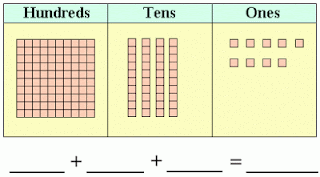Mixed fractions are just the mixture or a combination of two things of whole number and a fraction. Mixed fractions are specially used when we have to show how much a whole thing we have and how much of part of something we have. The form for mixed fraction looks like this, a and b/c, where ‘a’ is our whole number and b over c is b/c is our fraction.
Multiplying Mixed Number Fractions - For Multiplication of Mixed Fractions, we first convert the mixed fractions into improper fractions and the multiply them and then convert the solution back into mixed fraction. How do I Multiply Mixed Fractions – let us understand by taking an example, if we have to multiply 1 times 3/4 and 5 times 7/9 then we can convert 1 times 3/4 to improper fraction by multiplying 4 with 1 and adding 3 to it. We will get 7, which will be our numerator for the improper fraction. The denominator will remain same that is 4. So our improper fraction will be 7/4. Similarly we can convert 5 times 7/9 as (9*5) +7/9 which will be 52/9.
Hence we got two fractions as 7/4 and 52/9. We can multiply both the numerators and the denominators. We will get 7*52/4*9 which will be 364/36. We can reduce this fraction by dividing both the numerator and the denominator by 4 which makes the fraction as 91/9.
Now we can convert it into a mixed fraction by dividing. So 91/9 can be written as 10 times 1/9. Multiplying Mixed Fraction always gives a mixed fraction as the solution. The same we witnessed in the above example. We multiplied two mixed fractions and we got a mixed fraction as an answer. So to multiply mixed fractions we need to follow the following steps: -
1. Convert the mixed fractions that we have to multiply into improper fractions.
2. Multiply the improper fractions by multiplying the numerators and the denominators separately that is if we have two fractions, the numerator of both the fractions should be multiplied together and the denominator of both the fractions together. For example if we have 11/2 times 8/5. Then we can multiply 11 with 8 which will be 88 and 2 with 5 which will be 10. Therefore 11/2 times 8/5 gives 88/10
3. Reduce the fraction as much as we can.
4. Convert the answer back into the mixed fraction form.
